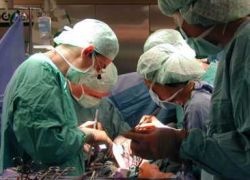Liver transplants
Until now, a liver transplant was the only treatment for patients with liver failure. Now primitive cells might become an alternative therapy.

Dr James Ross, who heads the research team at the Department of Surgery and the Tissue Injury & Repair Group, Centre for Regenerative Medicine, said: ‘Potentially, cell replacement therapies could provide alternative treatments that would avoid difficulties associated with obtaining sufficient donor organ transplantation,’ Dr Ross said. ‘We have now identified primitive cells with the potential to mature into different cell types within and without the liver. It is possible that these cells lie dormant in the adult liver and may be the source of repair cells that are activated by severe liver injury.’
The liver is often able to repair and heal itself following injury or damage and this occurs in one of three ways, Dr Ross pointed out: ‘First, mature liver cells have a well recognised and extensive capacity to divide in response to injury. Second, in response to massive loss of functioning liver tissue, a population of primitive liver stem cells may be stimulated to proliferate and develop into mature liver cells. The third mechanism of liver repair involves circulating stem cells originating from other sources, such as the bone marrow, and it is possible that these cells may be recruited into the liver and form new liver cells.’
30.08.2006
More on the subject:


